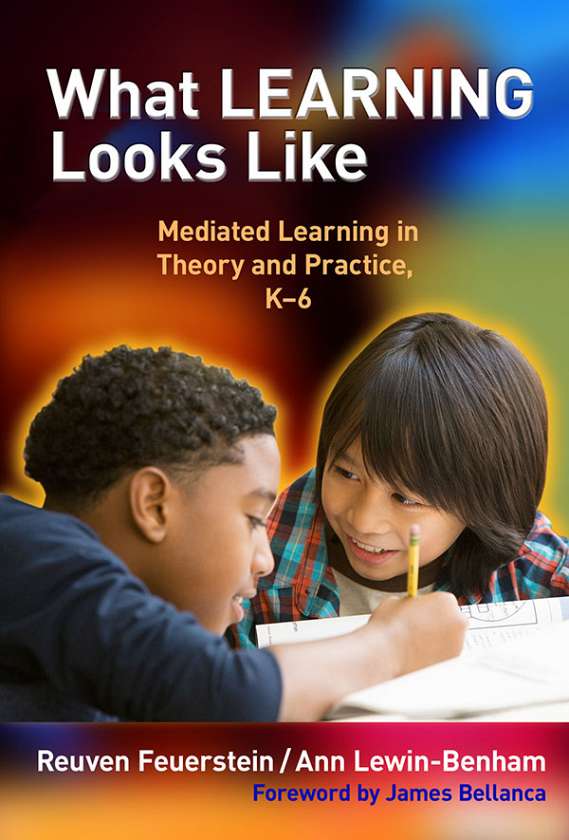Professors: Request an Exam Copy
Print copies available for US orders only. For orders outside the US, see our international distributors.
Reuven Feuerstein, Ann Lewin-Benham
Publication Date: May 25, 2012
Pages: 238

In this unique collaboration, the authors bring to life the theory of mediated learning. Through numerous examples and scenarios from classrooms and museums, they show how mediated learning helps children to become more effective learners. Readers learn the steps in the process, including analyzing the child’s problem, teaching the child to focus on the difficulty, and using the techniques of mediated learning to enable the child to overcome the learning challenge. This is the first book to present Reuven Feuerstein’s groundbreaking work in accessible language with copious examples of practice. With this volume, educators and administrators will have a reliable and practical way to understand the place of mediated learning in today’s schools.
Book Features:
Reuven Feuerstein was the founder and director of the Feuerstein Institute (formerly ICELP) and professor of psychology in Bar-Ilan University’s School of Education (Ramat-Gan, Israel), and a Nobel Prize nominee. Louis H. Falik is emeritus professor of counseling at San Francisco State University and a senior scholar at the Feuerstein Institute. Refael Feuerstein is chairman of the Feuerstein Institute. Their books include Beyond Smarter: Mediated Learning and the Brain's Capacity for Change and A Think-Aloud and Talk-Aloud Approach to Building Language: Overcoming Disability, Delay, and Deficiency.
“Rich with vivid examples, this book goes beyond sharing ideas to spark action toward deeper learning, even for oneself.”
—David Perkins, Project Zero, Harvard Graduate School of Education
“Ann Lewin-Benham and Reuven Feuerstein have collaborated to provide a remarkable, readable, and systematic exposition that joins the theory and practice of mediated learning experiences within the real worlds of museums and classrooms. The book provides concrete examples that show museum directors, teachers, and parents the practical ‘how to’ for building children’s cognitive structures.”
—From the Foreword by James Bellanca, International Renewal Institute
“Feuerstein and Lewin-Benham invite us to think differently about what constitutes learning. This phenomenal book makes the mediator's role more practical by providing not only the theory and research to support this strategy, but also specific examples, instructional sequences, and linguistic tools that teachers and parents can thoughtfully and intentionally employ to cause children to think more deeply and to understand their own cognitive processes.”
—Arthur L. Costa, Professor Emeritus, California State University, Sacramento
Foreword by James Bellanca
Acknowledgments
Introduction
Mediation: A Brief Description and Examples
A Word About Deficient Cognitive Functions
Reading This Book
Chapter Summaries
Knowing Your Authors
Chapter 1. Learning Through Mediation
Museums' Potential to Stimulate Learning
At a Museum: What Didn't Happen, Why, and Changing It
Recognizing Myths About Learning
Chapter 2. The Mediated Learning Experience Defined
Feuerstein: Mediator and Theorist
Theory of Mediation
The Three Partners of Mediation
Essential Aspects of Mediation
Summary: A Picture of Mediation
Chapter 3: Mediated Learning in Action
The FIE Programs: An Overview
FIE Lessons by Mediators
Summary: Imaginative, Authoritative, and Responsive Teaching
Chapter 4. Expert Mediators
Mediation in Two Classrooms
Mediation in an Exhibit
Summary
Chapter 5. Four Essential Cognitive Acts
Acquiring Basic Competencies
Intersection of Basic Competencies
Summary: Mediation—The Connecting Link to Learning
Chapter 6. Defining the Effectiveness of Learning Experiences
The Cognitive Map
The Thinking Deficiencies Tool
Two Techniques to Enhance Learning
The Case for Mediation: Demetria's Story
Summary: Analytic Observation Tools
Chapter 7. Creative Use of Effective Exhibits
Learning from Rich Experiences
Providing Conflict-Producing Ideas
Appealing to Multiple Intelligences
Summary: Mediating Exhibits
Chapter 8. More Essential Cognitive Acts
Empathy
Acquiring New Skills
Mastering Varied Modalities
Collaborating
Complex Thinking Acts
Museums' Abundant Experiences
Summary: Mediating for Complexity
Chapter 9. Blue Sky Partnerships
Beliefs About Learning
Adult Interventions
Museums as Partners
"What If" Ideas
Emily's Story: Mother as Mediator
Summary: Museums as Learning Centers
Chapter 10. Enlarging the Cognitive Repertoire
Incongruence
Repetition
Transformation
Illusion
Stereognostic (Hand/Vision) Experiences
Summary: Challenging Designs
Chapter 11. Stretching the Brain to Make Learning Happen
Motivation
Summary: Four Interrelated Factors in Learning
Moving from Concrete to Abstract Thinking
The Brain and Learning
Summary: When We Think and Learn
Chapter 12. After Words
For Teachers
Questions to Ask of Exhibits
Summary: Prepare, Question, Discuss
Understanding Exhibit Design
Summary: Bringing Learning Home
Appendix A: List of Deficient Cognitive Functions
Appendix B: Children with Learning Challenges: Notes for Parents and Exhibit Designers
References
Index
About the Authors
Professors: Request an Exam Copy
Print copies available for US orders only. For orders outside the US, see our international distributors.